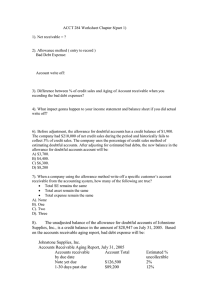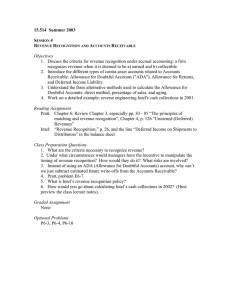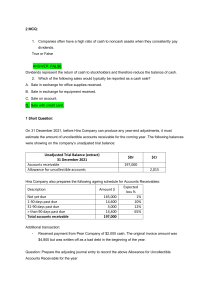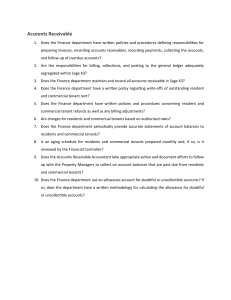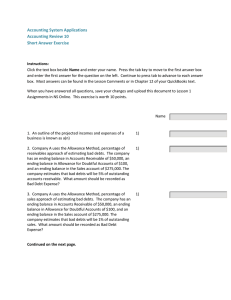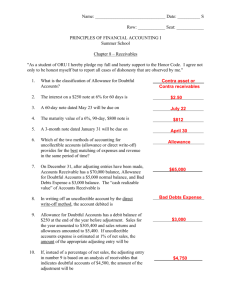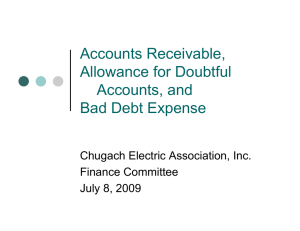Principals of Accounting I Help in Solving Problem 9-2A/B
advertisement
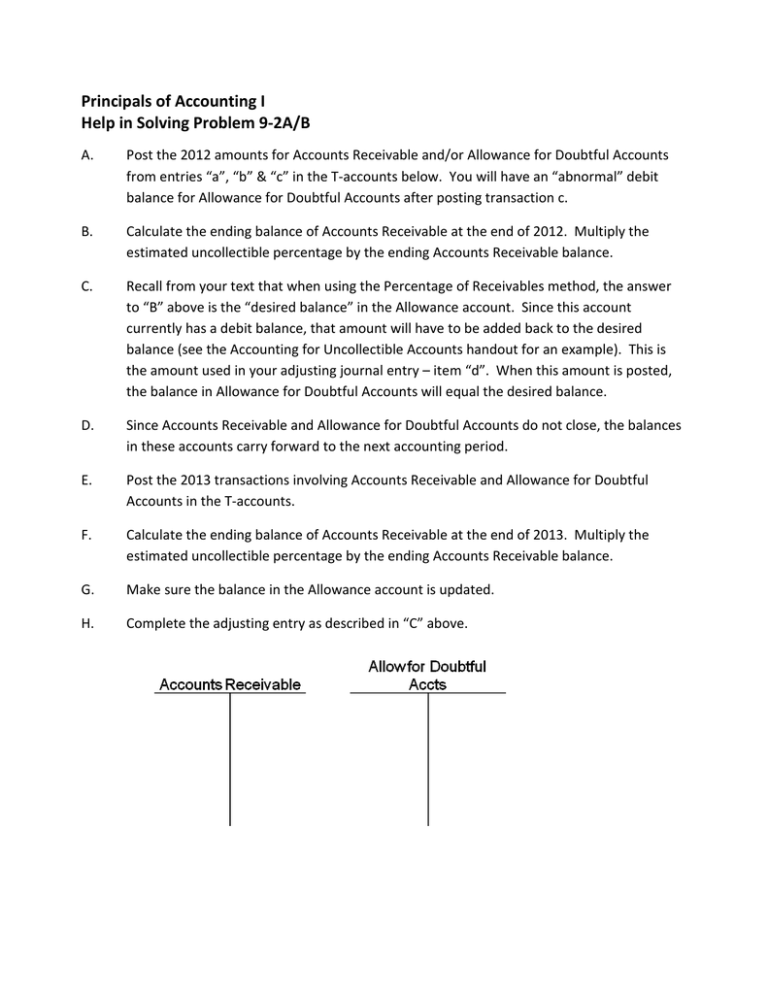
Principals of Accounting I Help in Solving Problem 9-2A/B A. Post the 2012 amounts for Accounts Receivable and/or Allowance for Doubtful Accounts from entries “a”, “b” & “c” in the T-accounts below. You will have an “abnormal” debit balance for Allowance for Doubtful Accounts after posting transaction c. B. Calculate the ending balance of Accounts Receivable at the end of 2012. Multiply the estimated uncollectible percentage by the ending Accounts Receivable balance. C. Recall from your text that when using the Percentage of Receivables method, the answer to “B” above is the “desired balance” in the Allowance account. Since this account currently has a debit balance, that amount will have to be added back to the desired balance (see the Accounting for Uncollectible Accounts handout for an example). This is the amount used in your adjusting journal entry – item “d”. When this amount is posted, the balance in Allowance for Doubtful Accounts will equal the desired balance. D. Since Accounts Receivable and Allowance for Doubtful Accounts do not close, the balances in these accounts carry forward to the next accounting period. E. Post the 2013 transactions involving Accounts Receivable and Allowance for Doubtful Accounts in the T-accounts. F. Calculate the ending balance of Accounts Receivable at the end of 2013. Multiply the estimated uncollectible percentage by the ending Accounts Receivable balance. G. Make sure the balance in the Allowance account is updated. H. Complete the adjusting entry as described in “C” above.
